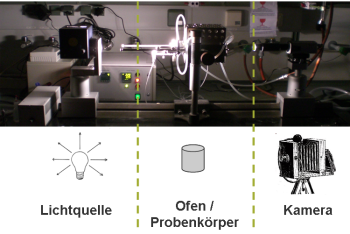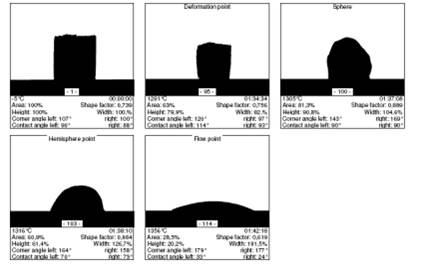Ash melting microscope
EM201; Hesse Instruments
General information
Fuel ashes consist of inorganic compounds, such as silica and alkali oxides. Due to the huge diversity in ash composition, it is not possible to define a general melting point that applies to all, let alone define a unique fuel-specific melting point. The melting process of the ash is strongly influenced by its chemical composition. The melting of the ash takes place in a wide temperature range. Even though slagging problems in power plants have different sources, the ash melting behavior helps to make a qualitative statement about the slagging behavior of the coal, which can then be applied to the machine in question. The ash melting behavior for coal is determined according to DIN 51730, while for biomass there is an extra process, DIN CEN/TS 15730, which can also be applied. This way, four characteristic temperatures in an oxidized atmosphere can be defined.
Functioning principle
The principle for the determination of ash melting behavior is based on a testing body, which is melted at defined temperature ramps. The melting temperature for rock coal reaches up to 1600 °C, for biomass, such as wood, the temperature lies at 1200 to 1300 °C, and for straw-based biomasses even lower. The evaluation of the data occurs automatically after the DIN 51730, where a shadow image of the sample is recorded, and all geometric changes are documented. Using geometric figures, the characteristic temperatures can then be determined, to be used for the comparison of various coal qualities.
Areas of application:
- Measurements according to DIN 51730 (1984, 1998)/ ISO 540-1995
- Characteristic temperatures plus sintering point
- Ash melting behavior
- Sintering behavior
- Dilatometric curves (line, form)
- Softening and melting behavior, wetting behavior
- Viscosity curve (according to H. Scholze)
A - Melting Temperature = Rounding of the edges.
B - Spherical Temperature =Spherical shape above its baseline.
C - Hemisphere temperature = Hemispherical shape, its height is half as much as its base line.
D - Flow line temperature = The test specimen has melted down and is now only one-third its size to that at hemispherical temperature.

